Want to visit a mysterious island where locals love Jews and hang Israeli flags from their homes? Want, for a change, to feel welcomed and respected by residents, and even be greeted with gifts, smiles, and honor guards of dancers? Then we have the perfect recommendation. You just need to travel to the other side of the world, to Samoa.
Yonatan Hershkowitz, 34, and his partner Shir set out on a six-month journey through the Far East and the remote islands of the Pacific Ocean. “I have been traveling my entire life,” he said. “Until recently, I worked at a start-up, and my partner is a lawyer. We both quit and went traveling.”
10 View gallery


Yonatan Hershkowitz
(Photo: Yonatan Hershkowitz)
He said that throughout Polynesia there is curiosity and warmth toward Israelis, but in Samoa he felt something different, something unusually powerful. “People say Samoans are big and warrior-like. It is true that they are physically large, but when you travel there you feel the opposite. Warmth, kindness, calm. And that is before you even say you are from Israel. When we introduced ourselves as Israelis, it became wild.
“The region is very religious, almost entirely Christian. From their perspective, we brought them Jesus, the Old Testament and the New Testament, and that is present in their daily life. You see people with Star of David tattoos, Israeli flags hanging on homes, hats with Israeli flags. They truly live it.”
The couple’s first encounter with Samoan affection for Israelis was especially surprising and set the tone for the rest of their stay. “The daughter of Samoa’s former finance minister is connected to Israelis, and her profile photo shows her with a lion and an Israeli flag,” Yonatan said. “She arranged a driver for us, a friend from the community, not a taxi driver, who waited for us at the airport with a huge Israeli flag. He pulled out a shofar and started blowing it at two-thirty in the morning, sixteen thousand kilometers from Israel. It was incredibly moving. She also booked us two nights at a friend’s hotel, on her tab.
10 View gallery


“Later in the trip, we stopped by a local home to ask to use the bathroom. When the woman heard we were from Israel, she immediately let us in and insisted that we stay the night. Her husband, who works in Australia, got on the phone and refused to hang up until we promised to reach out if we needed anything.”
The unexpected affection poured in from every direction, and the connections with locals grew into personal invitations that made their stay deeply intimate and unforgettable.
10 View gallery
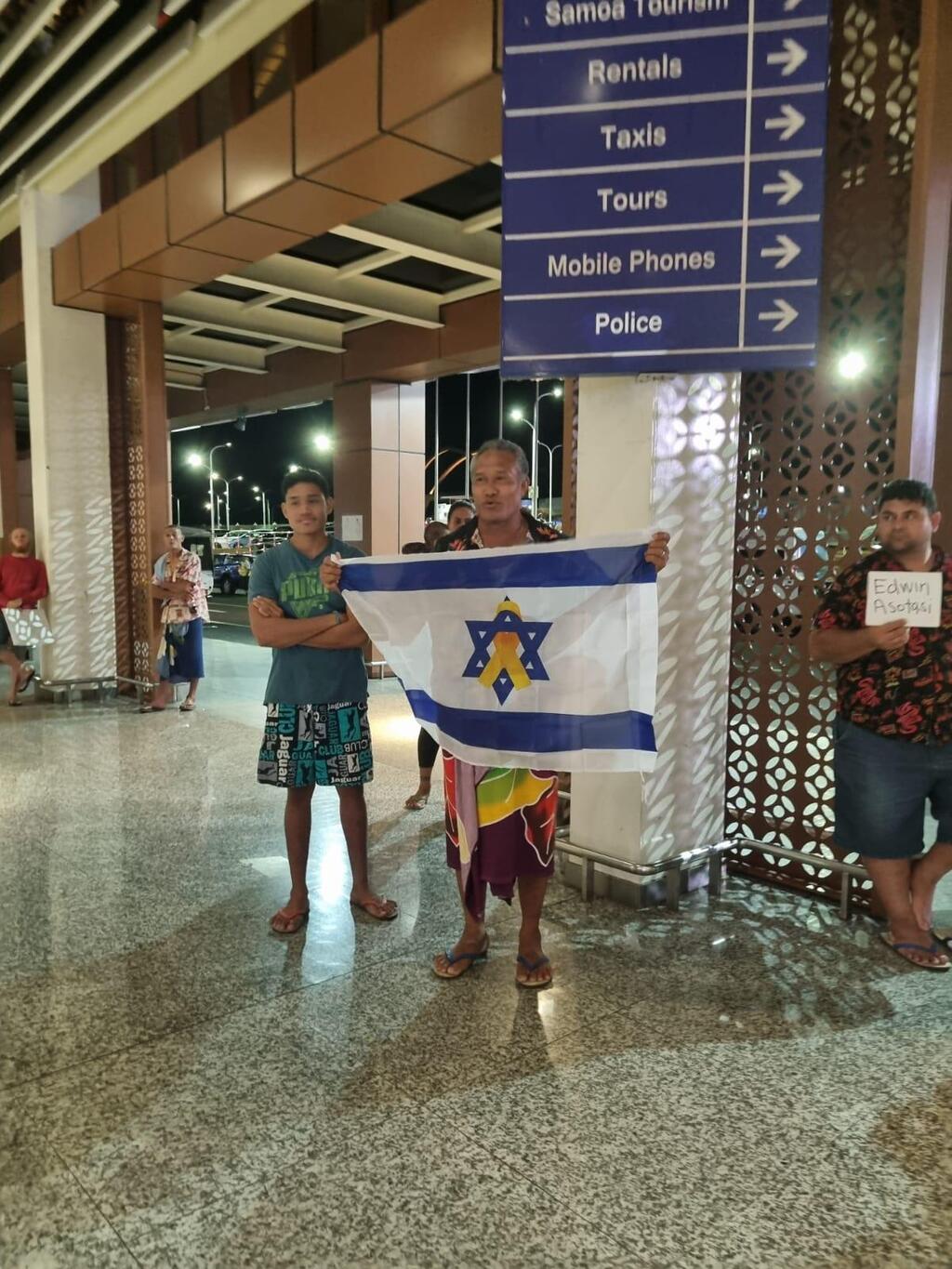

At the airport their driver was waiting with an Israeli flag
“Israel supporters from the Emmanuel community rented us a jeep for three days and invited us to their village, about an hour from the capital. They waited for us with Israeli flags, flower garlands, songs and dances. For three days, every time we entered or left the house, they stood in an honor guard with the flags, hosted us, asked about Israel, brought food and gifts, and guided us on what to see and do on the island.”
When it came time to leave, the farewell became a moving ceremony. “When they realized we were flying out the next day, they prepared a traditional send-off. They performed dances with Israeli flags, brought gifts and food. It felt like a real party.”
10 View gallery
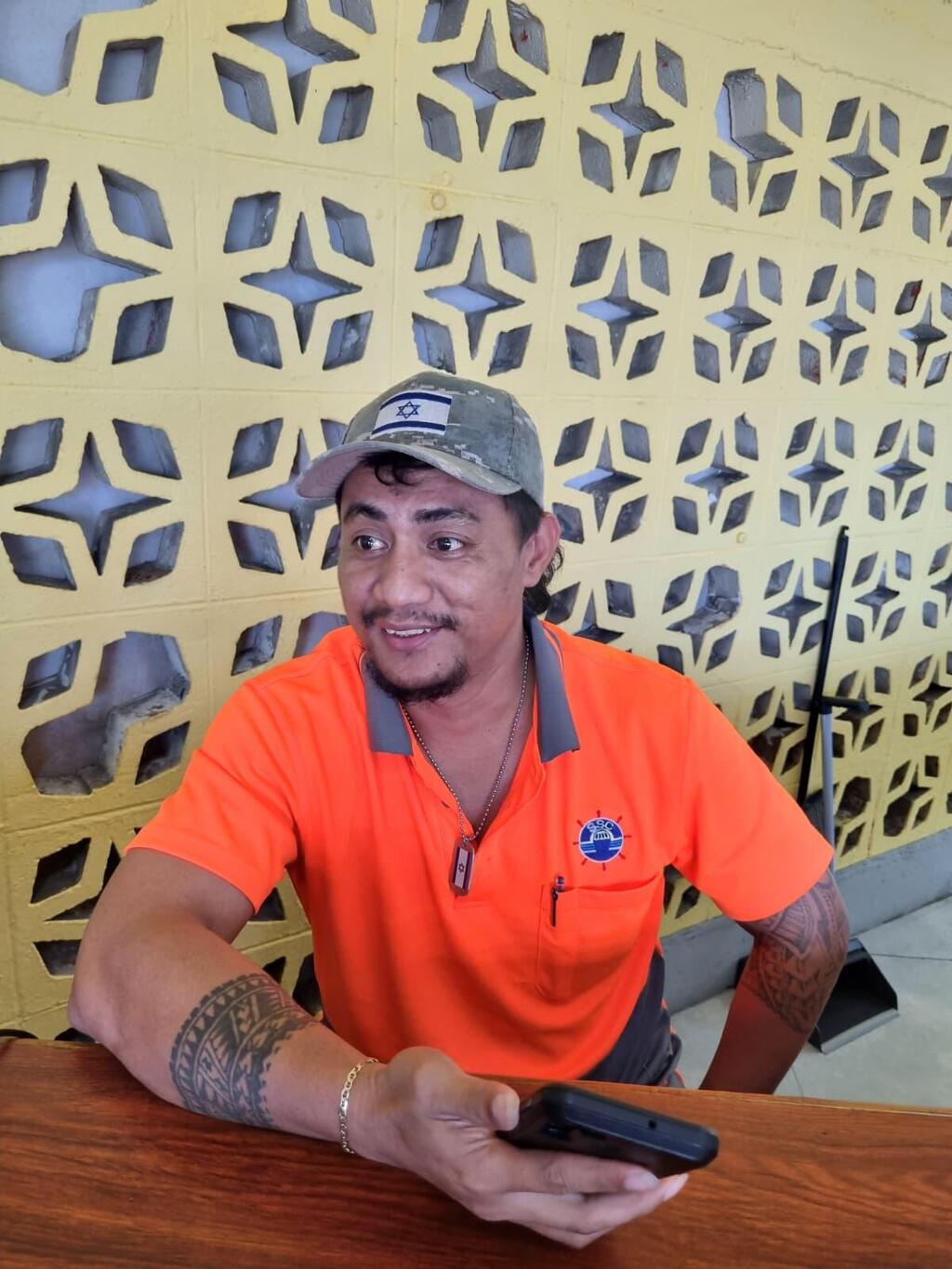

A local with an Israeli flag on his hat and necklace
Hershkowitz admitted that the overwhelming attention sometimes made him uncomfortable. “We knew Samoans loved Israel, but it was unlike anything we had experienced. At first it was refreshing to say ‘I am from Israel’ without fear and to get a positive reaction. But sometimes it felt strange to receive so much attention and honor guards just for being Israeli. We never asked for anything. We thanked them constantly and tried to give back. I answered every question, and on the last night I asked them to write notes so we could place them in the Western Wall.”
10 View gallery
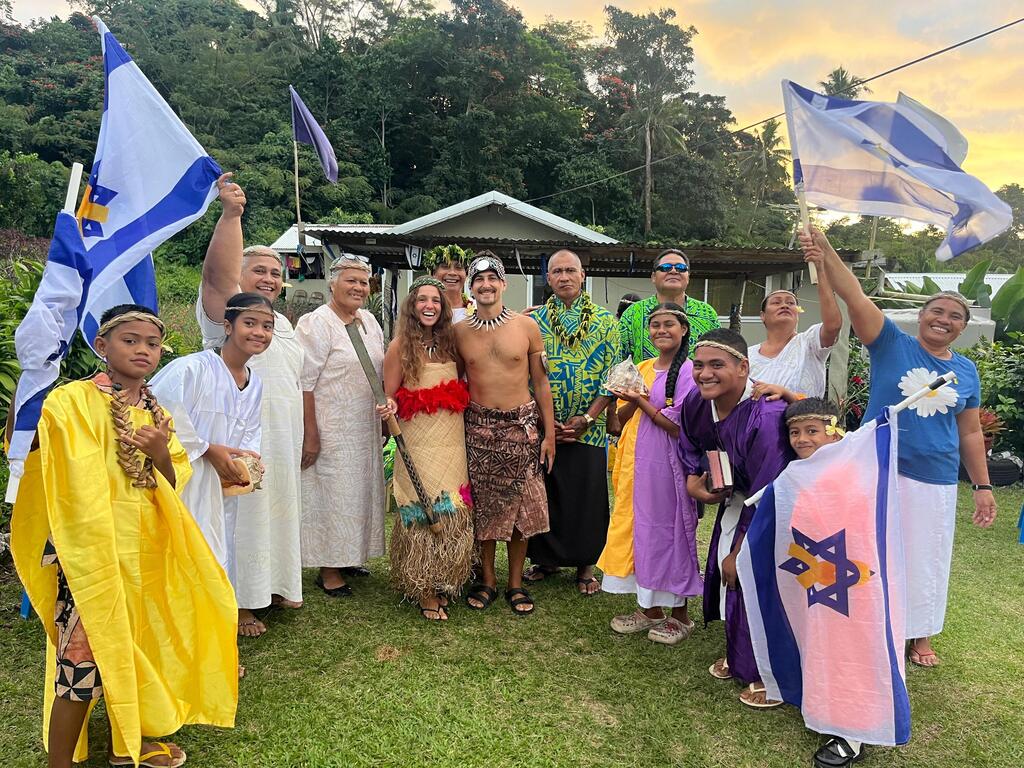

The farewell party on the last day
Then, in the middle of their dreamy island vacation, came a sharp reminder that life in the South Pacific is very different from home. “One day the owner of the place we were staying came over excitedly and said, ‘A volcano erupted and there is a tsunami warning. At nine-thirty everyone goes up the mountain and waits for it to pass.’ He stressed that in 2009 there was a severe tsunami that killed nearly two hundred people. We went up the mountain with all the locals and waited for an update until morning. Luckily nothing happened, only a small two-meter wave.”
Yonatan described a small but diverse country. “Samoa has about two hundred thousand residents spread over two main islands and a few smaller ones. The people are Polynesian, and there is everything there. Stunning beaches and a vibrant, authentic culture. Almost every hour you encounter a local event or custom.”
10 View gallery
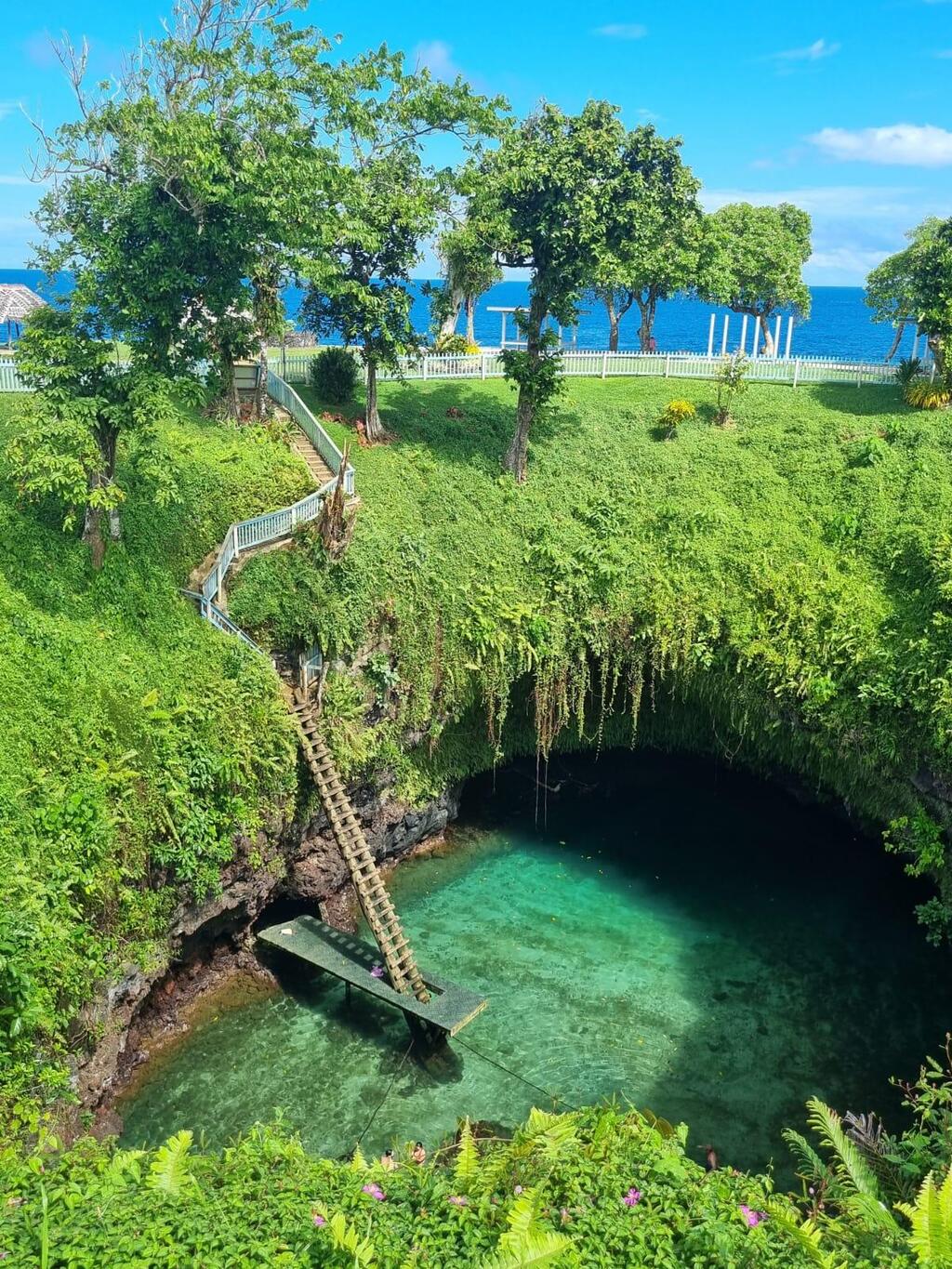

On Sundays, the country shuts down completely. “It is like our Sabbath, even more so because it is such a small nation. On one of our Sundays, we came across a farewell ceremony for the village pastor. There were dances, flowers, families bringing gifts, sometimes piles of money or traditional mats, and nonstop singing. Very authentic. Each time we spoke with locals we uncovered another layer of the culture.”
10 View gallery
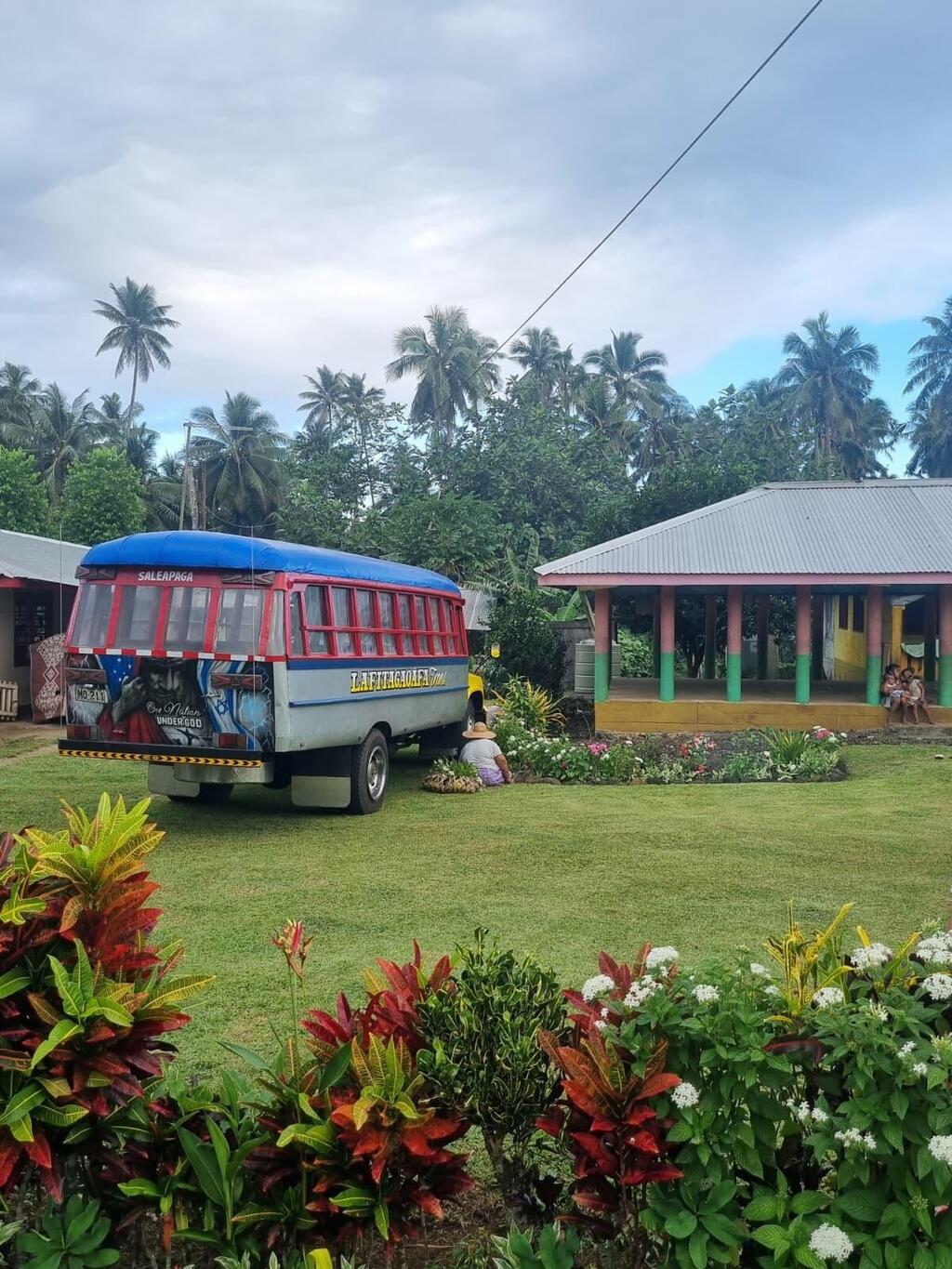

One of Samoa’s most striking traditions is an ancient practice of pain and pride. “Samoans are very proud of their tattoos. The English word tattoo comes from the Samoan word tatau. For men it is a tattoo that starts at the ribs and goes down to the knee, done with two traditional sticks. It is extremely painful, takes about two weeks and can cost up to about 2,500 dollars. It symbolizes status, a willingness to suffer for family, ancestors and honor. Women have a more modest version, but it represents the same idea.”
10 View gallery


Apia the capital of Samoa
(Photo: Ramunas Bruzas/ Shutterstock)
How do you get to Samoa?
“You can reach Fiji via Singapore. Fiji is the air hub of the South Pacific, and from there you continue to Samoa. You can also arrive through Hawaii, Australia or New Zealand.”
What do you eat in Samoa?
“Simple food. It is an island nation, so many products are imported. Supermarkets are expensive. For example, a kilo of shrimp costs about 90 shekels. People eat mainly what they can grow at home: taro roots, breadfruit and many combinations of fish with coconut milk, cooked in a traditional earth oven. There is no hot water in showers and no Wi-Fi. The country is so warm that you shower with regular water, and the internet is very weak, mostly through local SIM cards.”
10 View gallery


What about money?
Hershkowitz warned not to get confused. “The local currency is the tala, roughly equal to the shekel. It is important not to mix it up with American Samoa, which is an hour’s flight away. That is a U.S. territory and uses the dollar.”
“Two weeks in Samoa cost us about 1,500 dollars for two people, including a rental car at 35 dollars a day, which is relatively cheap. We landed in the capital, Apia, a small and unremarkable city. The country has two islands. The smaller one, Upolu, has the capital and most of the population. The larger one is Savai’i. The ferry ride between them takes about an hour, and you can bring the car along.”
10 View gallery


Transportation in Samoa is simple and relatively cheap. “You can explore by car, which is not too expensive, or by hitchhiking. Locals are very friendly. They will stop and take you even if it is out of their way. We rented a car and circled both islands. On Upolu there are many waterfalls and beautiful beaches, and you can sleep in a fale, a traditional open hut on the beach. The bathrooms are shared, like in Sinai. It costs between 35 and 50 dollars per person including breakfast and dinner. Not cheap, but the most authentic experience. We also stayed with locals for five of our thirteen nights, free of charge.”
“From the capital, you drive east to Lalomanu Beach, a gorgeous stretch of blue water and white sand. Farther on is the To Sua Ocean Trench, a giant natural pool created by collapsed lava. You climb down a ladder into clear water. It is an amazing place. There are also great snorkeling spots, areas to watch sea turtles and the Giant Clam Sanctuary, a huge field of massive, colorful clams. Along the way there are more waterfalls and many natural sites. Most of them are on private land, so you pay a small entrance fee everywhere.”

